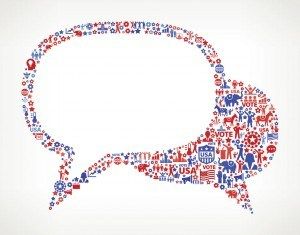Political committees have mastered social media marketing, and you can improve your own marketing campaigns by borrowing their techniques to build and expand a supportive base by connecting with audiences who may not have heard of your organization or are biased towards a competitor.
In the 2008 presidential race, Barack Obama’s campaign team was one of the first to truly tap the power of social media. They reached out to volunteers and voters on Facebook, Twitter and YouTube, and political committees haven’t looked back since.
Fast forward four years, and political campaigns are embracing social media technologies like never before. The 2012 Republican National Convention has a Facebook app that allows anyone to virtually attend the upcoming convention. It’s also partnering with Google to live-stream speeches on YouTube and broadcast online Google+ Hangout conversations with political candidates.
The Democratic National Convention released its first-ever mobile app this year, which offers live-streams of speeches. The DNC is also using Facebook, Google+, Twitter, Flickr, YouTube, Pinterest and Instagram to share its latest news, photos and videos with followers.

Techniques You Should Borrow
Politicians use multiple techniques to engage with audiences and encourage supporters to engage with each other. Use your social media channels to share personal messages, milestones, and behind-the-scenes information about your organization. Reinforce the connection with your audience by asking them to share their own photos, messages and stories. This give-and-take fosters a community of active supporters.
Traditional marketing channels, like TV and print, limit how much and how often organizations can connect with their audience. Social media lets you broadcast as much information as you want, and your supporters can access that information from anywhere and at anytime. You can also reach a wider audience by tapping into a wide variety social media networks—you never know where new supporters might be.
As politicians know, social media can amplify your message. If you craft a powerful message that resonates with your audience, it has viral potential. Social media response is also a good gauge of public sentiment, so if the reaction you receive is not what you expected, you know you must rethink your messaging.


